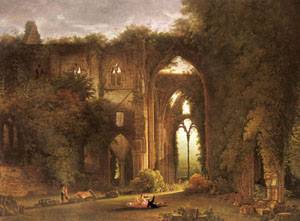The 1798 volume of Lyrical Ballads brings together three themes: the Supernatural, the Rural, and the Reflective, with WW most interested in the latter two themes (and STC’s the supernatural). The first edition begins with Coleridge’s Rime of the Ancient Marinere, in Seven Parts, and ends with Wordsworth’s “Lines Written a Few Miles Above Tintern Abbey, On Revisiting the Banks of the Wye During a Tour, July 13, 1798.
The experiment was also formal: drawing on two venerable forms: the “ballad” and the “lyric”. Often unites characteristics of the ballad form with the type of poetic contemplation of the self, characteristic of the lyric. For more information, visit this British Library page
ballad:
- a popular form; originally oral; associated with folklore and traditions of the “common” English “folk”
- tells a story; dramatic, condensed and impersonal
- often uses dialogue
- the speaker relates events with little self-reference or the expression of subjective response
- quatrain with alternating tetrameter/trimeter lines often the second and fourth lines rhyme; often have incremental repetition (rep. of line or stanza with an addition that advances the story)
- when published in a volume of poetry considered “literary ballads”; the same ballads could be set to music but then they would be received as songs and published with sheet music
lyric
- often short (10-250 or so lines)
- non-narrative poem
- usually without a set rhyme scheme or metrical patterns
- the speaker expresses a state of mind or a process of thought and feeling; often musing in solitude
- associated with the classical tradition
Lyric encompasses the sonnet (which does have a fixed form), the ode, and variations on the lyric, including the long meditative lyric poem, the personal lyric, and the dramatic lyric
